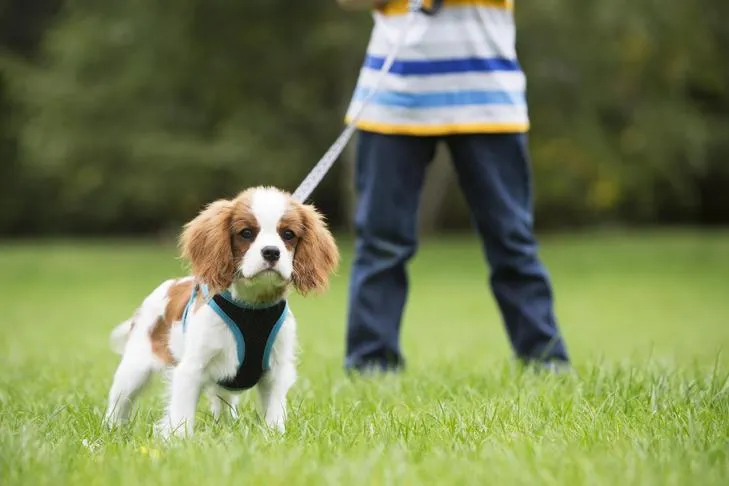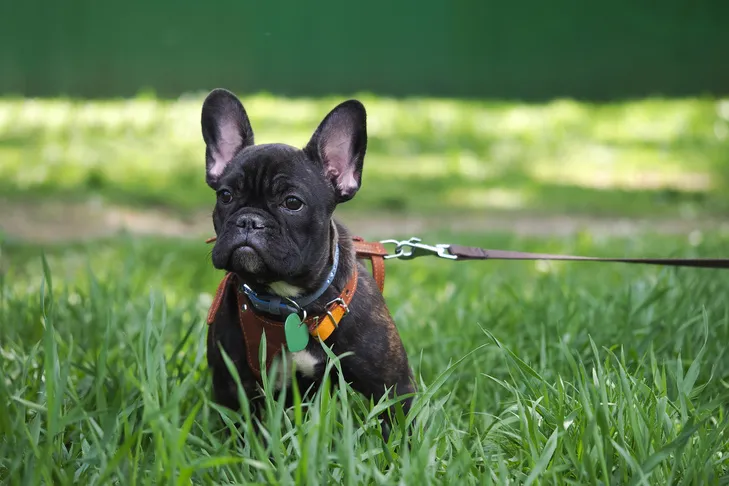Introducing your puppy to the joys of outdoor walks is a crucial step in their development, offering vital exercise and socialization opportunities. However, not all puppies are immediately enthusiastic about leashed excursions. Some may become frozen in their tracks the moment the leash is attached, seemingly fearful of the harness, leash, or the vastness of the outdoors. Understanding these initial hesitations and implementing the right training strategies can transform a reluctant puppy into an eager walking companion. This guide will delve into the reasons behind this reluctance and provide effective methods to foster a positive association with outdoor adventures, ensuring your puppy learns to love walks.
Building Confidence with the Leash and Collar
For many puppies, the mere act of clipping on a leash can be a deterrent. A leash signifies restraint, limiting their freedom to move or escape perceived threats, which can be an intimidating experience for a young dog. Instead of viewing the leash as an invitation to exciting adventures, they may perceive it as a source of fear. Similarly, even a collar can feel unusual or restrictive to a puppy. If a collar is used to physically pull or manhandle them, negative associations can quickly form. The goal is to ensure your puppy feels secure and comfortable wearing a collar and is not frightened by it.
 Boy walking a King Charles Cavalier Spaniel in a field.
Boy walking a King Charles Cavalier Spaniel in a field.
Ideally, your puppy’s breeder will have already introduced them to wearing a collar and leash. If not, it’s your responsibility to help your puppy build confidence with these items. Begin indoors with short, positive sessions. Engage your puppy in praise and play with your puppy while they are wearing the equipment, and offer delicious treats as a reward. The “Gotcha” game is also effective; gently grasp your puppy’s collar before presenting a favorite treat. Through these consistent positive associations, your puppy will soon see the collar and leash as precursors to enjoyable experiences.
Once your puppy is comfortable with the collar and leash indoors, you can begin to teach your puppy to walk on leash. While still inside, use treats to lure your puppy towards you as they are attached to the leash. Offer praise and reward your puppy when they move with you. Gradually progress to walking together. If your puppy shows hesitation, use treats to encourage them forward. Once they are confidently walking with you indoors, move your practice sessions to the backyard before venturing onto the sidewalk. Keep these training sessions brief, incorporating frequent praise and rewards to maintain a positive atmosphere.
Fostering a Positive Association with the Outdoors
As you transition your training efforts outdoors, remember that the sensory input can be overwhelming for some puppies. The multitude of sights, sounds, and smells can lead to anxiety. Effective socialization is key to overcoming your puppy’s anxiety and building their confidence in new environments.
Expose your puppy to a diverse range of people, considering variations in appearance, such as those wearing glasses, using wheelchairs, or sporting hats. Equally important is introducing them to various dogs and different settings. Crucially, avoid forcing any interactions. Allow your puppy to initiate contact and progress at their own pace. Maintain a positive approach by pairing new outdoor experiences with play, praise, and treats. This consistent positive reinforcement will help your dog feel more comfortable in the world, perceiving other people and dogs as friendly rather than threatening.
 French bulldog puppy in a harness sitting in tall green grass on a leash for a walk.
French bulldog puppy in a harness sitting in tall green grass on a leash for a walk.
Cultivating a Love for Walks
Your initial outdoor walks should prioritize enjoyment and exploration. Don’t be concerned with teaching your puppy to heel at this stage. Instead, encourage them to explore their surroundings and engage their senses by sniffing. To give your dog the best walk possible, allow ample time for bathroom breaks and avoid pulling on the leash. Remember, the leash is a safety tool, not a means of control. Your puppy will not develop a positive relationship with the leash if it is used to forcefully guide them.
Initially, your puppy might resist movement, dragging their heels rather than walking forward. Don’t worry about how to teach your puppy how to walk on a loose leash until they are comfortable and willing to move forward independently. By keeping the experience positive and fun, your puppy will soon anticipate walks with excitement. Only after this foundational comfort is established should you focus on teaching more refined walking behaviors.
 Beagle puppy on leash walking in the grass.
Beagle puppy on leash walking in the grass.
Effective Strategies to Encourage Puppy Walking
If your puppy continues to be hesitant about walking on leash, consider incorporating the following strategies:
- Controlled Distance: Carry your puppy a short distance (20-30 feet) from your home and then allow them to walk back independently. This scenario allows them to experience their surroundings while knowing they are returning to a safe place, which can motivate them to keep moving.
- Car Ride and Walk: Drive a block or two away from home and then walk your puppy back to your house. This changes the starting perspective and can make the walk feel more like an adventure.
- Explore New Locations: Drive to a novel environment, such as a quiet park or a pet-friendly store. New sights and smells can be highly motivating for exploration, and the absence of the familiar home environment might encourage your puppy to investigate rather than retreat.
- Positive Reinforcement Destination: Arrange for a familiar and liked person or dog to stand on the sidewalk a short distance away from your home. This provides an exciting and appealing destination for your puppy to walk towards.
- High-Value Rewards: Designate a particularly enticing treat or toy that your puppy only receives during walks. The allure of this special reward can be a powerful incentive for them to walk and explore.
- Positive Dog Training Classes: Enrolling in a positive dog training class offers a fantastic opportunity for socialization while receiving hands-on guidance tailored to your puppy’s specific needs.
Regardless of the techniques you employ, maintain a cheerful and upbeat attitude throughout your walks. Your puppy is highly attuned to your emotions; frustration or worry on your part can negatively impact their perception of the experience. Keep walks short and enjoyable, and always conclude each outing on a positive note. While it may take several weeks, each step you take together will bring you closer to your goal. With consistency and patience, your puppy will soon be embarking on walks with enthusiasm and newfound confidence.
